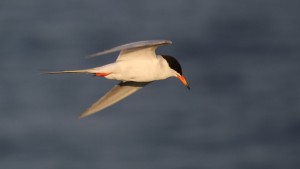
The San Joaquin Valley has always featured great extremes in weather and landscape―everything from flood to drought, and desert to inland sea. Before it was drained for agriculture, Tulare Lake, in the southern part of the Valley, was the second largest lake in the United States. Prior to levees and flood control, seasonal wetlands often stretched as far as the eye could see and the rivers were big enough for paddle wheel riverboats.
With all that water came birds, many of them normally associated with the western seacoast and beyond. Today, most of those birds still visit the Valley as migrants and many remain as winter visitors. Given the right conditions, some even breed here.
Most everyone has seen California Gulls in the Valley, even though they may not know their proper names. But California Gulls, which breed inland at places like Mono Lake as well as along the coast, are only one of a long list of gull species to appear in the Valley. At the right times and places, people can see almost as many gull species as are found on the coast.
Avid birder Jim Gain, whose new website, “Gone Gain,” documents his birding adventures, recently made a long trek to the southern part of the Valley to observe a very rare Little Gull, a diminutive species whose normal range is Europe and Asia. Along the way, Gain saw several other species of gulls as well as numbers of shorebirds, which are already beginning their southern migration.
Gain’s excellent photographs and skills with Internet technology have introduced many people to the Valley’s varied bird life. He’s a longtime contributor to the Stanislaus Audubon Society’s educational mission and shares his vast knowledge of the Valley’s natural history generously.
Recently, Gain heard about breeding Forster’s Terns at Woodward Reservoir. Another bird associated with the sea and sea coast, Forster’s Terns are among the most elegant birds aloft. Their forked tail plumes, pointed wings, and darting flight delight observers, and their fishing skills are almost magical.
Forster’s Terns like to raise their young on sand bars exposed by receding water. The drought has created many such places in our lakes and reservoirs, and the terns have taken advantage of the opportunity to add to their numbers in the Valley.
Jim Gain’s journey to photograph Forster’s Terns included a tour of some of eastern Stanislaus County’s best birding sites. He’s got a nice account of his adventure here. Be sure to check out the “Categories” and “Archives” sections of his new site. They are full of natural history and feature many of Gain’s excellent photos. It would be hard to find a better introduction to the Valley’s varied bird life, including our many sea and shore birds.
